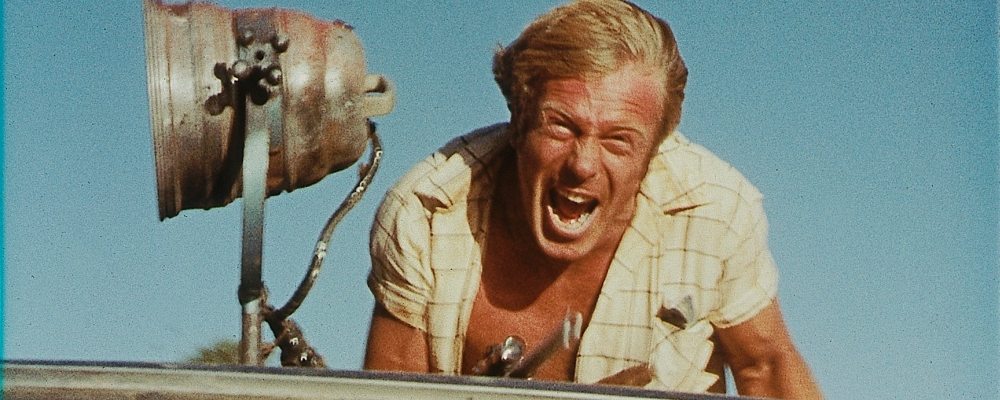Wake in Fright
Director: Ted Kotcheff
Cast: Gary Bond, Donald Pleasance, Chips Rafferty
Length: 108 minutes
Country: Australia/USA
Wake in Fright, the story of a teacher’s nightmarish plunge into the Australian Outback, was first released in 1971. Long considered Australia’s great ‘lost film’, it has now been fully restored and graces select cinemas in the U.K. this month.
Middle-class teacher John Grant (Gary Bond) is forced to travel to a remote mining town known as ‘The Yabba’ in order to catch a flight to Sydney, where he plans on meeting his girlfriend. The arid neighbourhood serves as the harsh, barren backdrop to a fearsome examination of Australia’s hard-drinking masculine culture. City boy Grant is as isolated within the aggressively macho social circles as The Yabba is within the unforgiving desert. The combative machismo to which John finds himself a helpless compliant is characterized as retrograde and mean.
A gambling disaster leaves Grant unable to afford his Sydney-bound flight, and stuck in The Yabba he is swallowed by the town’s crude and sordid lifestyle. He is judged by the red-blooded locals to be an outsider of highbrow pomposity and unmasculine affectability: they can’t believe he would ‘rather talk to a woman than drink beer.’ Ruthless kangaroo hunting and pointless brawling intermingle with intriguing sexual episodes: John vomits at the suggestion of a sexual encounter with a young woman, then later partakes in a suggested homosexual encounter with “Doc” Tydon (Donald Pleasance), a laconic resident who embodies the Yabba mentality at its darkest.
Wake in Fright is a visceral and frightening experience
Wake in Fright is disturbing in many ways; its savage animal-stabbing set-piece is overtly distressing, but its social commentary – the estrangement of an aborigine man from a lively group of white pals on a train, the depiction of women either blurred out of focus in background domestic environments or objectified sexually from close-up – grounds director Ted Kotcheff’s damnation of saturating masculinity in real-world truths. The intertwining of exaggerated, hellish visions with such uncomfortable realism makes for a devastating attack of a film. One which lunges through the screen and forces itself upon you, much like a sanguinary hunter upon a helpless animal. Wake in Fright is a visceral and frightening experience; the film was released within the same year as more famously shock-worthy productions A Clockwork Orange and Deliverance, but neither of those movies will discomfort you today quite like Wake in Fright will.
Aside from the ‘kangaroo sequence’, the film’s content is relatively safe and unobtrusive. What penetrates us is the film’s style. Blazing sunlight bleaches this brutal portrayal of masculinity in burnished copper tones. The film’s aesthetic is one of sweat and burning rather than tan and sunshine. This blistering visual style enhances the unpleasantness of the spectacle. A dissonant score, merciless lighting and formidable performances unnerve us with barefaced intent, leaving us reeling and disturbed by the time the end credits roll. Wake in Fright is the sort of film that stands the test of time so well because, rather than in fantastic imaginations of otherworldly monsters which can become quickly outdated, its horror lies in the real world. We’ve all had a brush with the sort of terrors that consume John Grant, but it is only after watching films as thorny and desolating as Wake in Fright that we think about just how dark an abyss the ordinary world can be.

Comments